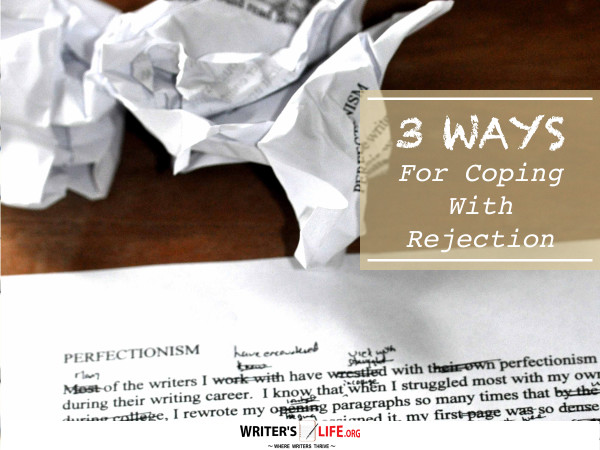- How To Tackle Jealousy In Creative Writing
- Common Submission Mistakes
- How To Stop Your Blog Becoming Boring
- The One Thing Every Successful Writer Has In Common
- How To Make Yourself Aware Of Publishing Scams
- Why Almost ALL Writers Make These Grammar Mistakes At Some Point
- 5 Tips For Authors On How To Deal With Rejection
- Top Mistakes to Avoid When Writing a Novel
- How to Avoid Common New Writer Mistakes
- 10 Mistakes New Fiction Writers Make
3 Ways For Coping With Rejection

Share, Pin or Retweet If You Like Writing.
Rejection is part of a writer’s life. Anyone who wants to make it as a writer needs to learn to face rejection bravely, gracefully, and frequently.
Three tips for coping with rejection:
- Laugh at your rejections.
- Learn from your rejections.
- Always have a new project underway, something that will give you hope no matter how many rejections come your way for the previous project.
Are you sick of having your work rejected. Maybe it's time to self-publish! “How to Get Published, Sell Books & Attract Tens of Thousands of Readers by Selling Your Content on Amazon’s Kindle” (CLICK HERE) is a webinar that we put together that teaches writers how to publish to Amazon’s Kindle Directory and also market, promote and sell their work.
You may take some consolation in knowing the rejection history of these writers and works:
Dune by Frank Herbert – 13 rejections
Harry Potter and the Philosopher’s Stone – 14 rejections
Auntie Mame by Patrick Dennis – 17 rejections
Jonathan Livingston Seagull – 18 rejections
A Wrinkle in Time by Madeline L’Engle – 29 rejections
Carrie by Stephen King – over 30 rejections
Gone With the Wind by Margaret Mitchell – 38 rejections
A Time to Kill by John Grisham – 45 rejections
Louis L’Amour, author of over 100 western novels – over 300 rejections before publishing his first book
John Creasy, author of 564 mystery novels – 743 rejections before publishing his first book
Ray Bradbury, author of over 100 science fiction novels and stories – around 800 rejections before selling his first story
The Tale of Peter Rabbit by Beatrix Potter – rejected so universally the author decided to self-publish the book
From rejection slip for George Orwell's Animal Farm:
“It is impossible to sell animal stories in the U.S.A.”
From rejection slip for Norman MacLean’s A River Runs Through It:
“These stories have trees in them.”
From rejection slip for article sent to the San Francisco Examiner to Rudyard Kipling:
“I'm sorry, Mr. Kipling, but you just don't know how to use the English language."
From rejection slip for The Diary of Anne Frank:
“The girl doesn't, it seems to me, have a special perception or feeling which would lift that book above the curiosity level.”
Rejection slip for Dr. Seuss’s And To Think That I Saw It on Mulberry Street:
“Too different from other juveniles on the market to warrant its selling.”
Rejection from a Chinese economic journal:
“We have read your manuscript with boundless delight. If we were to publish your paper, it would be impossible for us to publish any work of lower standard. And as it is unthinkable that in the next thousand years we shall see its equal, we are, to our regret, compelled to return your divine composition, and to beg you a thousand times to overlook our short sight and timidity.”
This post by a staff writer was published under the title Rejection: 3 Methods for Coping at http://www.writingclasses.com/InformationPages/index.php/PageID/341.





























